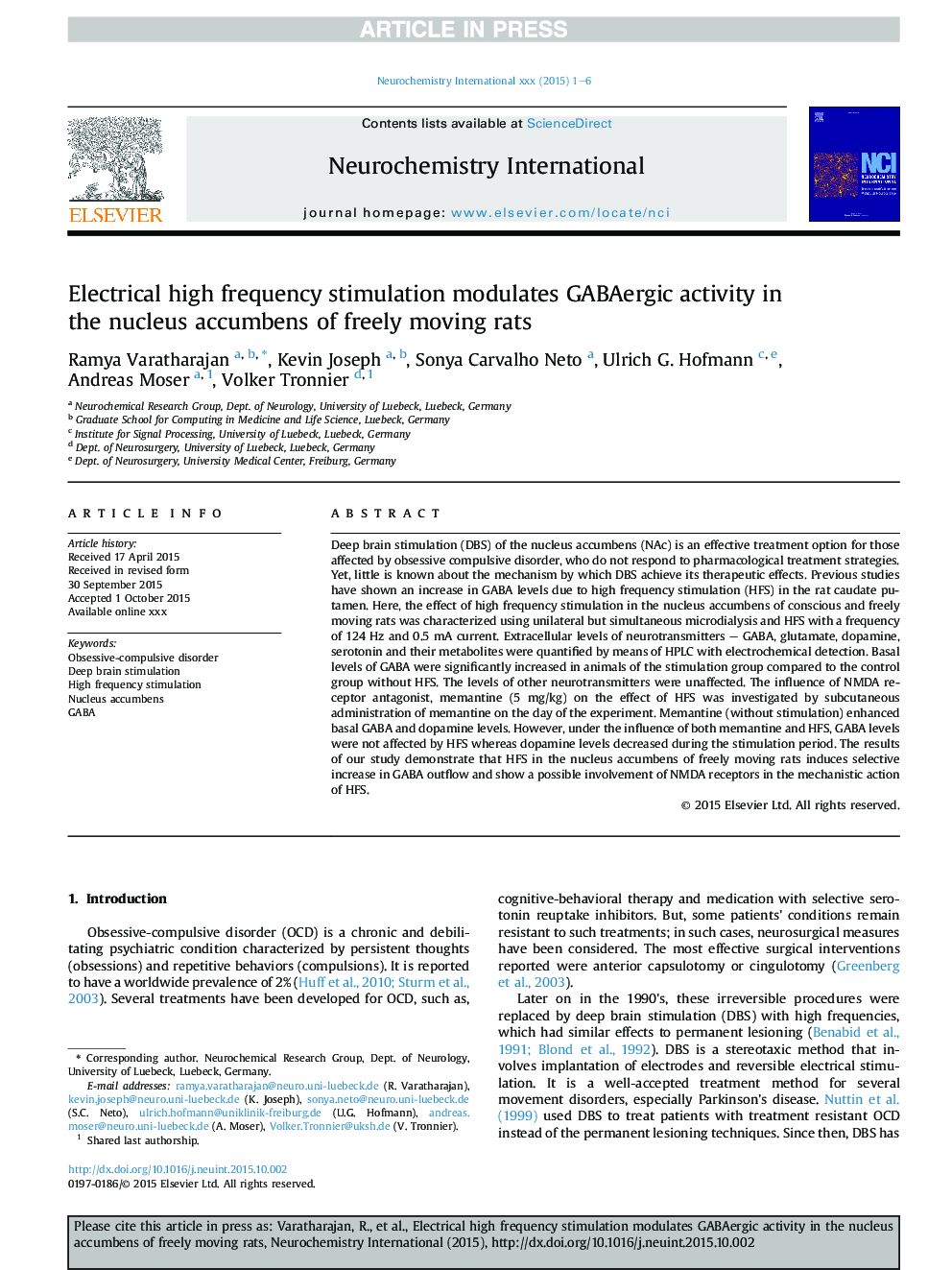| Article ID | Journal | Published Year | Pages | File Type |
|---|---|---|---|---|
| 8479136 | Neurochemistry International | 2015 | 6 Pages |
Abstract
Deep brain stimulation (DBS) of the nucleus accumbens (NAc) is an effective treatment option for those affected by obsessive compulsive disorder, who do not respond to pharmacological treatment strategies. Yet, little is known about the mechanism by which DBS achieve its therapeutic effects. Previous studies have shown an increase in GABA levels due to high frequency stimulation (HFS) in the rat caudate putamen. Here, the effect of high frequency stimulation in the nucleus accumbens of conscious and freely moving rats was characterized using unilateral but simultaneous microdialysis and HFS with a frequency of 124Â Hz and 0.5Â mA current. Extracellular levels of neurotransmitters - GABA, glutamate, dopamine, serotonin and their metabolites were quantified by means of HPLC with electrochemical detection. Basal levels of GABA were significantly increased in animals of the stimulation group compared to the control group without HFS. The levels of other neurotransmitters were unaffected. The influence of NMDA receptor antagonist, memantine (5Â mg/kg) on the effect of HFS was investigated by subcutaneous administration of memantine on the day of the experiment. Memantine (without stimulation) enhanced basal GABA and dopamine levels. However, under the influence of both memantine and HFS, GABA levels were not affected by HFS whereas dopamine levels decreased during the stimulation period. The results of our study demonstrate that HFS in the nucleus accumbens of freely moving rats induces selective increase in GABA outflow and show a possible involvement of NMDA receptors in the mechanistic action of HFS.
Keywords
Related Topics
Life Sciences
Biochemistry, Genetics and Molecular Biology
Cell Biology
Authors
Ramya Varatharajan, Kevin Joseph, Sonya Carvalho Neto, Ulrich G. Hofmann, Andreas Moser, Volker Tronnier,
